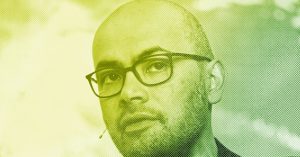In March of 2019, Mark Zupan, President of Alfred University in New York, offered a $1 million wager to Clayton Christensen, the former Harvard Business professor and author. Years earlier, Christensen earned notoriety for predicting that more than half of all American colleges would close within a decade. Zupan was willing to bet that Christensen was wrong about college closures, which he has been.
“Professor Christensen’s prediction about the demise of half of higher education institutions over the next ten to fifteen years seemed far off the mark, as did his reason for the demise – online education options. In light of this, I wanted to see if he would be willing to put his money where his mouth was,” Zupan said when I followed up to see what happened with his wager offer.
But, Zupan said, “I never heard back from him in response to my email, nor to the article.” He took the silence as the professor being, “either too busy with other stuff, or didn’t believe in his predictions regarding higher education.”
It’s fair to assume that Christensen and his acolytes believed in their predictions. But it’s also clear that, as Zupan and others knew, the predictions would be wrong. In fact, if you dig into the state of education a bit, it’s also clear that the for-profit, online schools that Christensen said would be the disruptors, have turned out to be pushed nearly entirely out of business. The main middle of colleges and universities have by and large been just fine.
Alfred University was probably exactly the type of school that the doom-sayers of disruptions circled as most likely for demise. Alfred is not a major name brand. It’s in the middle of New York, which is experiencing population shifts. It’s a private, non-profit school with fewer than 2,000 students.
But Alfred is not just still in business, it’s growing.
“New undergraduate student enrollment is up 30% this fall compared to last fall,” Zupan said. “While the COVID years were tough on our students and our university enrollment, we are seeing significant increases in both new student enrollment and retention of existing students. Our first-to-second-year student retention, for example, is up five percentage points over last year,” he said.
That’s remarkable. In an era where we’re told repeatedly that colleges are teetering on the cliffs of ruin, the Alfred University story should be in the headlines.
Instead, the headlines we’re getting are largely the same as they have been for years, despite the data showing that, even though a simple head count of school closures seems to be growing, it’s very misleading. Not only has the for-profit school sector faded dramatically, more than half of the schools that have closed since 2019 were religious schools – seminaries, bible colleges, or catholic colleges.
But even that pace of school closures and realignments, “is still not even remotely close to what Christensen predicted,” Zupan said. No doubt about it.
It’s not as though there are no threats or challenges in the higher education ecosystem. There are.
“COVID has created some definite challenges financially for higher education, especially for smaller private schools that are not well-endowed philanthropically,” Zupan said. He also cites “the looming demographic cliff, especially in the Northeast,” as well as “increasing questions about the value of college,” and “a growing percentage of high school graduates opting to forgo attending college on account of the tight labor market and what they can earn without a college degree.”
As he was with the Christensen misfire, Zupan is right about all three. At the same time, colleges have significant options for addressing the temporary decline in college-age, college-eligible teenagers. And the labor market will change. It always does. Though it is true that we are collectively doing a surprisingly bad job at telling the truth that going to college is an outstanding investment – and in nearly every case, worth every penny. But that can, and probably will, turn around too. After all, the facts are stubborn.
Regardless of how long it takes those trends to turn, betting on them sinking colleges such as Alfred – especially in any significant numbers – is ill-advised. Non-profit and public colleges and universities are strong, resilient and an excellent value proposition for nearly everyone. If you happen to disagree and have a million bucks, Zupan said he’s still willing to make the same wager.
Read the full article here










